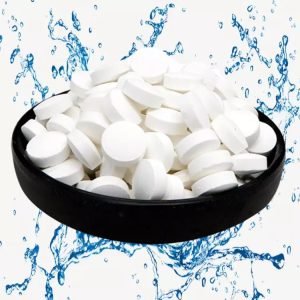
UNDERSTAND THE MEANING OF "FOOD GRADE" IN HYGIENIC PROCESSING.
Understand the meaning of "food grade" in hygienic processing.

In the field of hygienic processing, “food grade” represents a series of strict standards and requirements, aiming to ensure the safety and hygiene of materials, equipment and processing procedures in contact with food, so as to prevent food from being contaminated and safeguard the health of consumers. The following is a detailed explanation of the meaning of “food grade”:
Safety of Materials
· Non-toxic and Harmless: Food grade materials must be non-toxic, that is, they will not release substances harmful to the human body, such as heavy metals (lead, mercury, cadmium, etc.), toxic chemicals (such as formaldehyde, benzene, etc.) and other harmful substances. Once these substances enter the human body, they may accumulate in the body and cause damage to various organs and systems of the human body, triggering various diseases.
· Compliance with Regulatory Standards: Food grade materials need to strictly comply with relevant national and international regulatory standards, such as the “National Food Safety Standard – General Safety Requirements for Food Contact Materials and Articles” in China. These regulatory standards have clear provisions on the usage limits and migration amounts of various substances in food contact materials. Only materials that meet these standards can be recognized as food grade materials.
Hygienic Requirements in the Processing Procedure
· Clean Production: The food processing procedure must follow the principle of clean production, that is, a series of measures should be taken during the production process to reduce the generation and emission of pollutants and maintain the cleanliness and hygiene of the production environment. This includes regularly cleaning and disinfecting the production equipment and workshops to prevent dust, impurities, etc. from mixing into the food; and properly handling the wastewater, waste gas and waste residue generated during the production process to avoid polluting the environment.
· Good Operating Practices: Operators must strictly abide by good operating practices during the food processing process, such as wearing clean work clothes, masks, gloves and other personal protective articles, maintaining personal hygiene; and following the prescribed operating procedures for production to avoid food contamination caused by improper operation. For example, during the food processing process, direct contact with food by hand should be avoided to prevent the spread of bacteria and viruses on the hands to the food.
Measures to Prevent Contamination
· Physical Isolation: During the food processing process, physical isolation measures should be taken to prevent food from contacting non-food grade substances. For example, food processing equipment should be made of food grade materials, and when designed and installed, consideration should be given to preventing food from contacting the non-food contact parts of the equipment. Meanwhile, the food processing workshop should be reasonably laid out, dividing different functional areas such as raw material area, processing area, finished product area, etc., to prevent cross-contamination between different areas.
· Chemical Contamination Control: The use of chemical substances should be strictly controlled during the food processing process to prevent chemical contamination. Food grade processing aids and disinfectants, etc. must meet relevant standards, and when used, they should be operated according to the prescribed dosage and method to avoid excessive use resulting in the retention of harmful substances in the food. For example, during the cleaning and disinfecting process of food processing equipment, food grade disinfectants should be selected and disinfected according to the correct concentration and time, and after disinfection, it should be thoroughly cleaned to prevent disinfectant residue.
Traceability and Quality Control
· Traceability: Food grade hygienic processing requires the establishment of a complete traceability system, which can trace food from the procurement of raw materials, production and processing, packaging and transportation to sales and other links. Through the traceability system, food quality and safety problems can be discovered and dealt with in a timely manner, safeguarding the rights and interests of consumers. For example, the production date, batch number, shelf life, etc. should be marked on the food packaging for consumers to query and trace.
· Quality Control: Food processing enterprises should establish a strict quality control system to monitor the procurement of food grade materials, the hygienic status of the processing process, and the quality of the finished products throughout the process. By regularly testing and inspecting the products, it is ensured that the food meets the relevant hygienic standards and quality requirements. For example, enterprises should regularly sample and test the food they produce, and the test items include microbiological indicators, physicochemical indicators, etc. Only products that pass the test can be sold out of the factory.
Eagle Fittings – Your Professional Supplier of Stainless Steel Pipe Connection Technology. Our 3A sanitary fittings, sanitary sampling valves, and sanitary sample valves are certified as food-grade materials.


